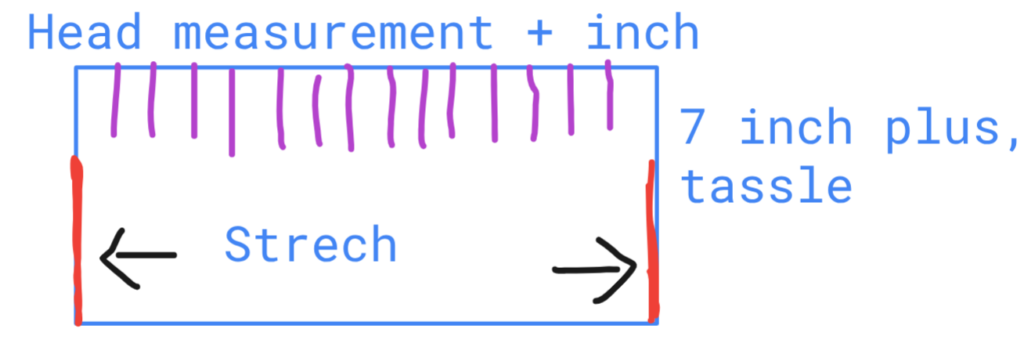
I never thought I’d find myself hunched over a table on a Sunday morning, needle in hand, fabric scattered like confetti, muttering under my breath about “just two metres of polar fleece, how hard can it be?” And yet, here I was, armed with fox-patterned fabric, scissors, and a vague memory of sewing two tea towels together twenty-five years ago. Welcome to my Slow Joy Secret Adventure.
I’d decided it was time to try making something for my little one and my partner—two pineapple hats, if we’re being whimsical. And I’m happy to report: they look absolutely adorable. More than that, the whole process gave me a surprising sense of calm, mindfulness, and happiness I hadn’t expected.
Why I Decided to Sew Hats
Creativity is a lifeline for me—I live to make things, to take a quiet idea and turn it into something tangible. Sewing seemed like a perfect, budget-friendly way to channel that energy. I already had a needle, thread, and a small pile of old scraps, so all that remained was to pick some fabric. Hats for the family felt manageable, useful, and fun—a small project that could spark a lot of joy.
And so I embarked on a journey of creative play, mindful focus, and—let’s be honest—a fair bit of trial and error.
The Sewing Adventure Begins
First lesson learned: estimating fabric is an art I do not possess. I thought two metres would be enough. It was more than enough. Two metres felt like a blanket’s worth of material, not two tiny hats. Total spend: £23.08 on polar fleece and some orange cuff fabric. In reality, I used just a fraction of that.
Then came measuring heads, sewing straight lines (or trying to), and tying the top bit off with leftover scraps. Several pricked fingers later, I realised that mistakes weren’t failures—they were part of the joy.
Here you only sew up around 7 inches (red), cut tassels (purple), and tie the tassels with an off cut.

Fun Fact-style mini-list:
- Total fabric spent: £23.08
- Actual material used: maybe 1/10th
- Cost Per Hat: £11.54 (This will drop the more hats I make)
- Hats made: 2
- Pricked fingers: 4–5 (lost count after the third)
- Time spent: surprisingly meditative, roughly 2–3 hours
The Pineapple Hat Success
The little one’s hat has long tassels, bouncing with every step, as does my partner’s. Both are made from warm polar fleece, with foxes curled up on a blue background, perfect for brisk mornings or lazy afternoon walks.
There’s something about handling fabric, feeling its texture, and working slowly with needle and thread that grounds you. It’s slow, deliberate, and oddly satisfying—a true embodiment of Slow Joy. Watching the tassels swing as they toddled around the room was worth every pin prick.
Family Reactions and Joyful Moments
The first time the little one wore the hat, eyes wide and tassels flopping over their shoulders, we couldn’t stop laughing. My partner looked charming in theirs, smiling at the sheer ridiculousness of wearing a pineapple-style creation on the sofa.
Tickling sessions became a new ritual. Hats on, laughter flying, I realised these small, silly moments were the real treasure. Happiness, I discovered, isn’t always in grand gestures—it’s in the tactile, playful, shared moments.
DIY vs Buying: Cost and Value
Now, for the financially curious: the total cost of making the two hats was £11.54. Compare that to store-bought or second-hand options (£10–15 each), and suddenly the ROI is brilliant. Beyond cost, the value of creating something with your own hands, seeing it bring joy, and enjoying the slow, mindful process? Priceless.
I now genuinely believe that making clothes can be cheaper, more sustainable, and infinitely more joyful than buying new. While second-hand probably costs the same, there’s a different kind of joy in hunting for the perfect item versus creating it yourself.
Quick cost breakdown mini-list:
- Fabric & materials: £11.54 (used fraction of £23.08 purchased)
- Store-bought equivalent: £10–15 per hat
- Time: ~2–3 hours
- Happiness factor: off the charts
Lessons Learned and Happy Accidents
Mistakes became part of the magic. Overbuying fabric, pricking fingers, guessing measurements—all of it contributed to laughter, reflection, and a sense of accomplishment. The mindfulness of focusing entirely on a tactile, small project was unexpectedly grounding.
This, I think, is the essence of Slow Joy: allowing yourself to be immersed, imperfect, and fully present in creating something small but meaningful.
Looking Forward: Next Projects
Having successfully navigated pineapple hats, I’m already eyeing my next challenge: a sweater. Will it be as joyful? Will I make even more hilarious mistakes? Almost certainly. But the Slow Joy isn’t in perfection; it’s in the process, the making, the shared laughter, and the mindful attention to small, personal projects.
Gentle Questions for the Road
As I reflect on this small sewing adventure, I realise how easily happiness can hide in tiny, unexpected moments. A tassel swinging, a fox-patterned hat, fingers pricked with care—these are not just minor events. They are reminders that joy is often slow, soft, and shared.
- What small, creative project could bring joy to your family this week?
- How might focusing on one mindful, hands-on task shift your perspective on everyday life?
- Are there small, imperfect “mistakes” that could turn into your own moments of Slow Joy?
